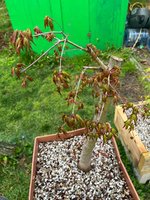BobbyLane
Imperial Masterpiece
absolutely nothing wrong with taking the inititiative and diving in head first, ive always learnt best by doing my own thing. if your experiment fails, big deal just get another tree and try a different approach. you dont need to ask permission for every little thing and most of the time the answer could be found with a little research. I cant remember asking someone when was the best time to do this or that, I just do it and see what happens. ive also lost a maple from chopping it to nothing and then sticking it in the ground, it died back. I knew it was risky but did it anyway and that was only 2 years ago this happened, its really not a big deal, it didnt even cost much.
Last edited:







